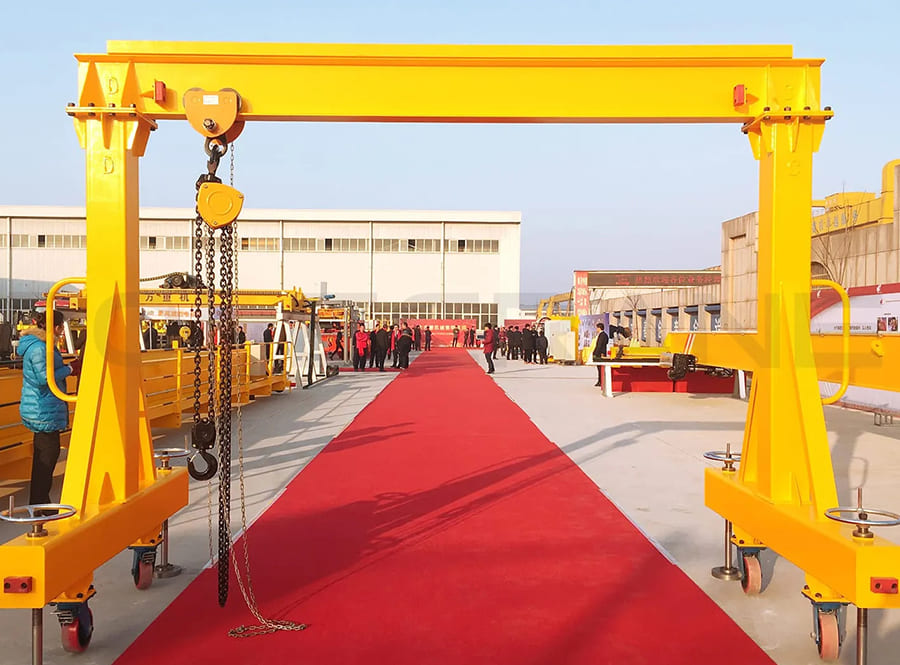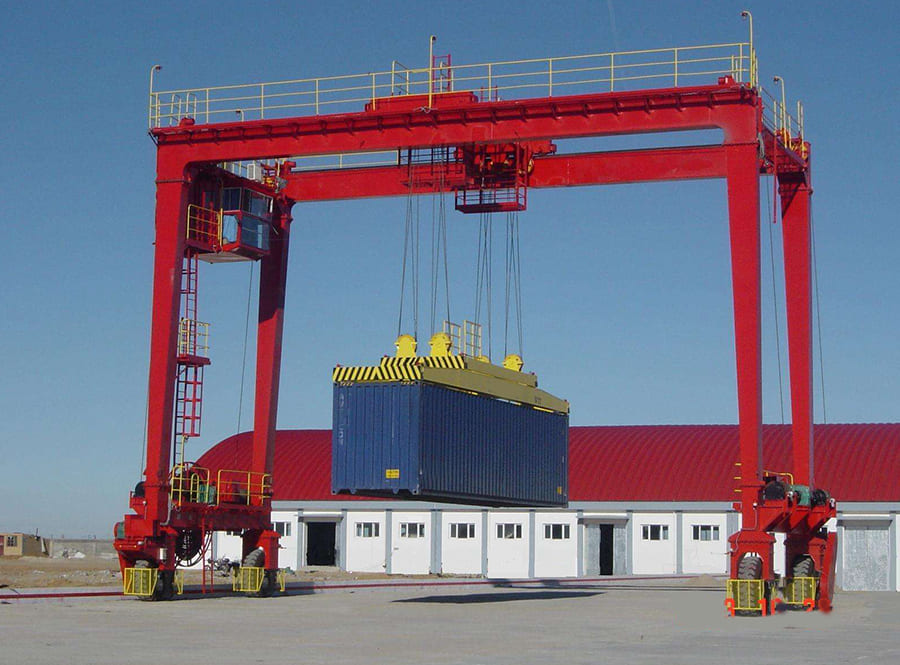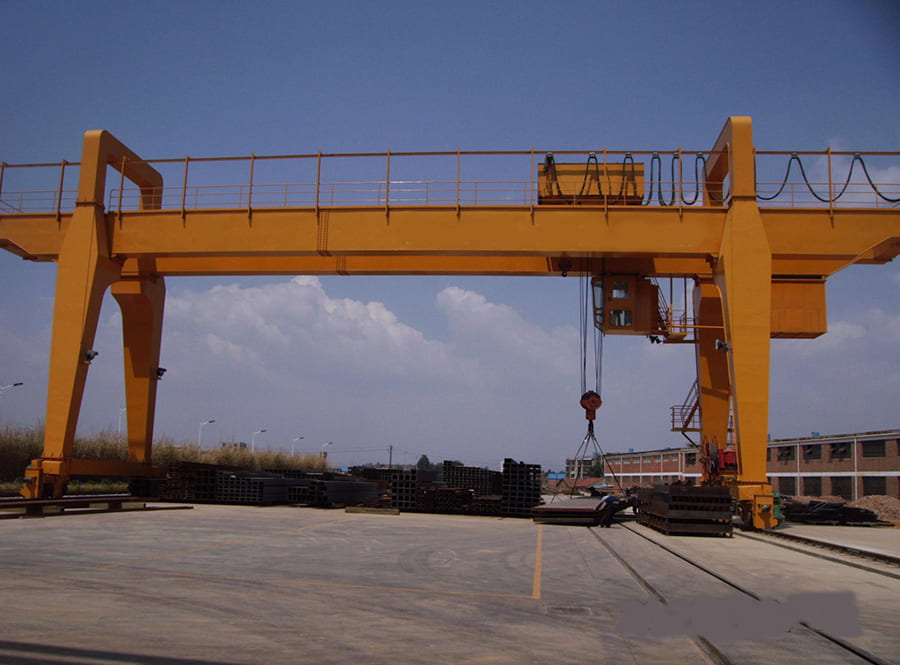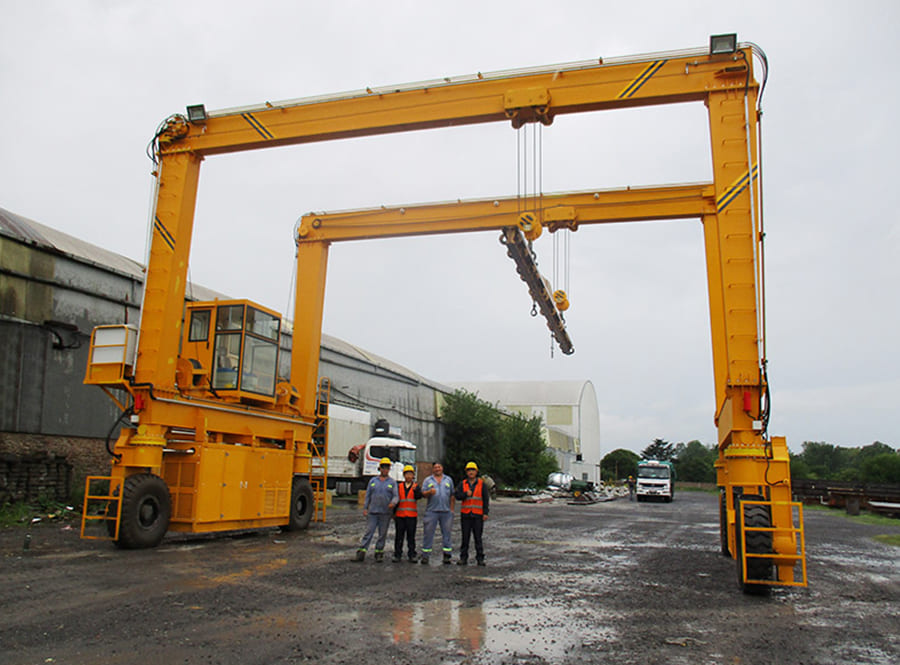Industrial multipurpose gantry crane price can be classified according to the structure of the door frame, the form of the main beam, the structure of the main beam, and the form of use.
1. According to the door frame structure
Divided into gantry cranes and cantilever gantry cranes

Sevencrane multipurpose gantry crane for sale
1、全龙门起重机:主梁无悬伸,小车在主跨度内运动。
2. Semi-gantry crane: The outriggers have height differences, which can be determined according to the civil engineering requirements of the site.
Cantilever gantry crane
1. Double cantilever gantry crane: The most common structural form, the stress of the structure and the effective use of the site area are both reasonable.
2. Custom multipurpose gantry crane supplier: This structural form is often selected due to site restrictions.
2. According to the main beam form
1.Single main beam
The single main girder gantry crane has a simple structure, is easy to manufacture and install, and has a small mass. The main girder is mostly a deflection box frame structure. Compared with double main girder gantry crane, the overall stiffness is weaker. Therefore, this form can be used when the lifting capacity Q≤50t and the span S≤35m. Single girder gantry crane door legs are available in L-type and C-type. The L-type is easy to manufacture and install, has good stress resistance, and has a small mass. However, the space for lifting goods to pass through the legs is relatively small. The C-shaped legs are made in an inclined or curved shape to create a larger lateral space so that goods can pass through the legs smoothly.
2. Double main beam
Double main girder gantry cranes have strong load-bearing capacity, large spans, good overall stability, and many varieties. However, compared with single main girder gantry cranes with the same lifting capacity, their own mass is larger and the cost is higher. According to the different main beam structures, cost multipurpose gantry crane cost can be divided into two forms: box beam and truss. Generally, box-shaped structures are used.
3. According to the main beam structure
1.桁架梁
The structural form welded by angle steel or I-beam has the advantages of low cost, light weight and good wind resistance. However, due to the large number of welding points and the defects of the truss itself, the truss beam also has shortcomings such as large deflection, low stiffness, relatively low reliability, and the need for frequent detection of welding points. It is suitable for sites with lower safety requirements and smaller lifting capacity.

2.箱形梁
Steel plates are welded into a box structure, which has the characteristics of high safety and high stiffness. Generally used for large-tonnage and ultra-large-tonnage gantry cranes. As shown in the picture on the right, MGhz1200 has a lifting capacity of 1,200 tons. It is the largest gantry crane in China. The main beam adopts a box girder structure. Box beams also have the disadvantages of high cost, heavy weight, and poor wind resistance.
3.蜂窝梁
Generally refers to “isosceles triangle honeycomb beam”, the end face of the main beam is triangular, there are honeycomb holes on the oblique webs on both sides, and there are chords on the upper and lower parts. Honeycomb beams absorb the characteristics of truss beams and box beams. Compared with truss beams, they have greater stiffness, smaller deflection, and higher reliability. However, due to the use of steel plate welding, the self-weight and cost are slightly higher than that of truss beams. It is suitable for sites or beam sites with frequent use or heavy lifting capacity. Since this beam type is a patented product, there are fewer manufacturers.
4. According to the form of use
1. Ordinary gantry crane
This kind of crane mostly adopts box type and truss type structure, and has the most wide range of uses. It can handle various finished items and bulk materials, with a lifting capacity of less than 100 tons and a span of 4 to 39 meters. Ordinary gantry cranes with grab buckets work at a higher level. Ordinary gantry cranes mainly refer to hook, grab, electromagnetic, and hoist gantry cranes, and also include semi-gantry cranes.
2.Hydropower station cost multipurpose gantry crane cost
It is mainly used for lifting, opening and closing gates, and can also be used for installation operations. The lifting capacity reaches 80~500 tons, the span is small, 8~16 meters, and the lifting speed is low, 1~5 meters/min. Although this kind of crane is not frequently lifted, the work is very heavy once it is used, so the work level must be appropriately increased.
3. Shipbuilding gantry crane
Used to assemble the hull on the slipway, there are always two lifting trolleys: one has two main hooks, running on the track on the upper flange of the bridge; the other has a main hook and an auxiliary hook, on the lower flange of the bridge. Run on rails to flip and lift large hull segments. The lifting capacity is generally 100~1500 tons; the span is up to 185 meters; the lifting speed is 2~15 meters/minute, and there is also a micro-movement speed of 0.1~0.5 meters/minute.
4. Container gantry crane
Used in container terminals. Container track gantry crane unloading the quay wall container carrying bridge from the ship with a trailer
After being transported to the yard or rear, they are stacked by a container gantry crane or directly loaded onto a truck for transportation, which can speed up the turnover of container carrying bridges or other cranes. Stacking yards that can stack containers with 3 to 4 layers in height and 6 rows in width usually use tire type, but rail type is also used. Compared with container straddle trucks, container gantry cranes have larger spans and heights on both sides of the mast. In order to meet the transportation needs of port terminals, this kind of crane has a higher working level. The lifting speed is 8~10 meters/min; the span is determined according to the number of rows of containers that need to be spanned. The maximum is about 60 meters, corresponding to the lifting weight of 20-foot, 30-foot, and 40-foot long containers of about 20 tons and 25 tons respectively. and 30 tons.





















